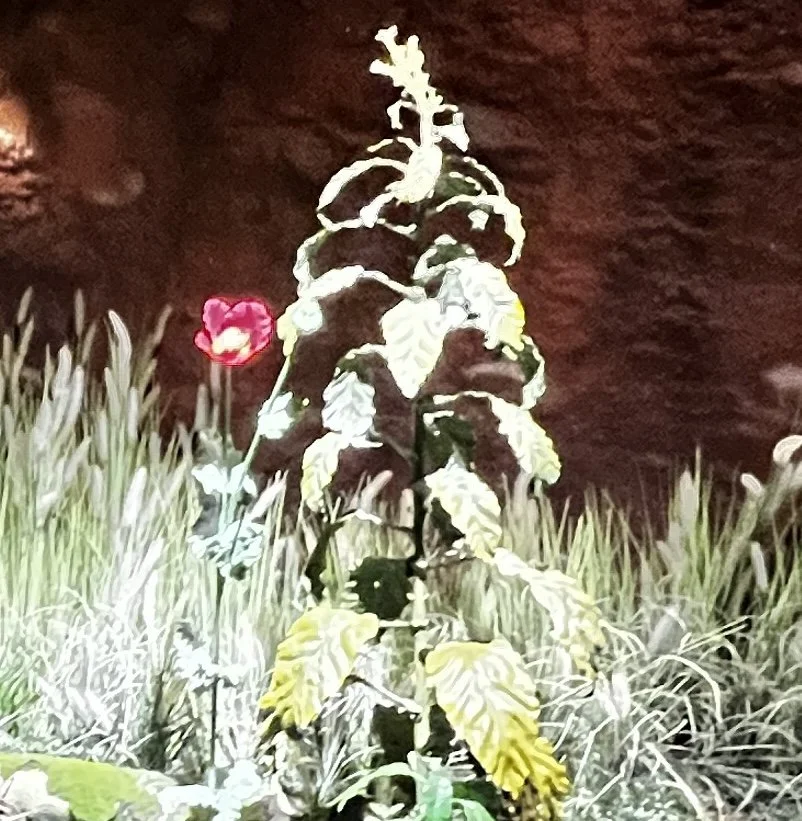Going Solo in Chiang Rai: Part 5
The Opium Museum, a reflection of the human condition on so many levels
The museum has a fascinating collection of antique opium weights and scales used in the opium trade of bygone eras. The weights are crafted from bronze or brass in auspicious animal shapes or the twelve Asian zodiac signs. Many of the scales are pocket-sized, housed in carved boxes. There are photos, diagrams and botanical displays of the poppy plant whose botanical name, papaver somniferum, means ‘to cause sleep’. They come in white, pink and red with the purple variety having the strongest narcotic content.
A video on the step-by-step opium pipe preparation plays near a suitably emaciated life-sized (Madam-Tussaud-like) wax model of a smoking man lying on his side in an opium den smoking a pipe held to a flame that burns the drug and produces the smoke. Addicts would support their heads on cool ceramic opium pillows. Glass cabinets display a variety of these pillows and pipes; some are true works of art.
Plaques and posters around the walls relate the history of opium and some of its impact on societies in Thai, Chinese and English. Most shocking are the mentions of government and military involvement in drug trafficking.
Below: The opium poppy; an addict smoking at an opium den; scales and weights; hill tribes selling to an opium merchant; pipe preparation instructions with video, intricate pipes and scenes from the 1967 regional opium war.
The story visitors take away would read like this:
The first recorded use of the opium poppy was way back in 4,000 BC when fossilised opium seeds and fruit were discovered at the site of a neolithic Swiss village. A Sumerian tablet dated 2,200 BC mentions its use as do papyrus texts from 1,550 BC. These revealed that Egyptians were adept at opium cultivation for medicinal use during the reigns of Akhenaten and Tutankhamun. Opium then spread to the Middle East and Greece along trade routes and is mentioned in Homer’s Iliad and in the writings of Hippocrates, the father of Western medicine, who mentioned it as useful drug to treat all manner of illnesses. This led to its increased popularity and spread. It was brought to India via the conquests of Alexander the Great in 300 BC and then found its way to Africa and later along the Silk Road to China during the Tang Dynasty when Turkish and Arab traders advised Chinese practitioners to use opium to treat illnesses.
In the 18th century, as addiction to the drug grew, opium grown mainly in India became a valuable import in China creating immense profit for many Western nations such Portugal, France, Spain but most significantly for the UK through its East India Company. When opium addiction threatened to destroy Chinese society, rulers of the Qing dynasty cracked down on its use. This severely impacted Britain’s income leading to the opium wars of 1839 and 1856 between it and China, each lasting several years during which China was defeated and lost Hong Kong and the Kowloon Peninsula to Britain. An ironic twist of fate, then saw the Empress Dowager Cixi ordering domestic cultivation of opium to salvage an economy damaged by war. The southern part of China – home to hill tribes – was then soon covered with opium fields and local tribes became experts in opium cultivation. However, they were increasingly persecuted, and by the end of the 19th century had fled China to settle in the mountainous region where Laos, Burma and Thailand meet, taking both seeds and opium cultivation skills with them. As opium plants grow best at 3,000 feet above sea level, this region was perfect and soon became known as the opium triangle and later as The Golden Triangle because opium was nicknamed ‘black gold’ and was so precious that it was traded in gold.
The region then exponentially increased its production to meet global demand after 1941 when the Chinese Communist Party eliminated all opium production from China and some Western powers relied on opium trafficking to support their military campaigns. The opium story then continued its tragic inhumane journey as various warring factions, armies and governments supported opium production to line their pockets and fund their various conflicts and wars; the CIA, for example, supported heroin and opium traffickers such as the National Liberation Front of Corsica, and the anti-communist Kuomintang. The French supported hill tribe opium production to raise funds to finance wars against Laos, Cambodia and Vietnam who were fighting for their independence from France, and 1967 saw yet another opium war. As a result of these regional conflicts and international demand, almost every mountain in northern Thailand, Laos and Myanmar was covered in opium poppy fields in full bloom for most of the second half of the 20th century.
However, more recently, the governments of all three nations with territories within the Golden Triangle finally committed to end opium cultivation: Thailand by 2000, Laos by 2006 and Myanmar by 2014. The coffee plantations we drove past today on both sides of the border are flourishing where once the poppies bloomed, but we should not forget that the cultivation of both was possible only because the mountains had earlier been cleared; deforested by greedy European timber companies hungry for teak. It seems a miracle that the earth continues to provide no matter what or how much we humans take from it. But too many have lived with the delusion that such generosity is a bottomless pit; a garden that needs no tending, a bank account that will never empty.









